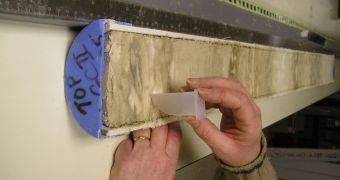About 18,000 years ago, the world was at the peak of the last glaciation, or Ice Age. Over the next thousands of years, massive amounts of carbon dioxide appeared in Earth's atmosphere, and researchers have been arguing that the deep ocean was the source. However, a new study shows this to be false.
The issues associated with explaining the source of the dangerous greenhouse gas is complex. On the one hand, this contributed to warming our planet, but on the other hand, its appearance cannot be explained. If the deep ocean were to be confirmed as its source, then the problem would be solved.
Researchers believed that this is the case. But paleoclimatologists (experts in the study of ancient climates and climate changes) at the University of Michigan (U-M) says that the deep ocean couldn't possibly have produced the vast amounts of CO2 required to boost concentrations by 30 percent.
If the conclusions of this study stand up to scientific scrutiny, then it may be necessary for climate scientists to return to the drawing board, and rethink our current understanding of the most fundamental interplays that regulate atmospheric carbon concentration over geological time.
“It's certainly fair to say that we need to have some other working hypotheses at this point,” U-M paleoclimatologist David Lund explains. He is the lead author of a new paper detailing the findings, which is published in this week's issue of the top journal Nature Geoscience.
“If we can improve our understanding of the carbon cycle in the past, we will be better positioned moving forward as CO2 levels rise due to anthropogenic causes,” adds the expert, who holds an appointment as an assistant professor in the U-M Department of Earth and Environmental Sciences.
Oregon State University professor Alan Mix and University of California in Irvine (UCI) research scientist John Southon were the coauthors of the new paper. Funds for the study were collected from the US National Science Foundation (NSF).
During the study, investigators analyzed core fragments collected from sediments on the ocean floor. The samples were collected from a depth of more than 8,940 feet (2,725 meters). All the sediments contained very tiny plankton shell fragments, which were carbon-dated.
“Frankly, we're kind of baffled by the whole thing. The North Pacific was such an obvious source for the carbon, but it just doesn't match up. At least we've shown where the carbon wasn't. Now we just have to find where it was,” Oregon State paleo-oceanographer Alan Mix explains.

 14 DAY TRIAL //
14 DAY TRIAL //